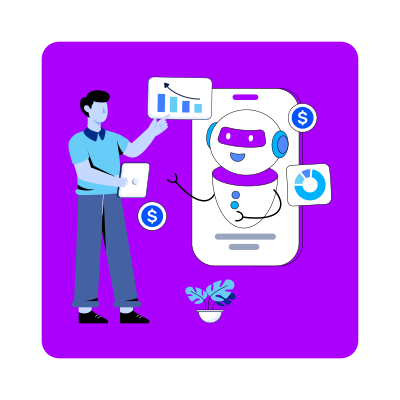Top 10 Predictions for the RPA Market in 2021
Few could have predicted the events that shaped 2020 and put automation center stage for all large organizations across the globe. RPA was always expected to keep growing, but with surges in supply, demand, and adaptation to a remote workforce and consumer-base, RPA entered a hyper-growth stage that exceeded expectations.
Last year, we laid out our top 10 predictions for the RPA market in 2020. After closely watching and analyzing how automation has evolved in the past 12 months, it's now time to reflect on how automation changed in 2020 and forecast how those trends will evolve in the year to come, with our top 10 RPA predictions for 2021.
1. Scaling RPA Will Continue to be a Challenge
This year, RPA surpassed the pilot stage with companies going all in on automation. Yet organizations will struggle to scale RPA across the enterprise to make the jump from pilot projects to sizeable digital workforces.
The inability to scale will mainly result from the significant burden of RPA maintenance and support required to service the sizeable portfolio of automations they have in production.
2. The Consequences of Rushing to Automate Will be Felt
In response to the pandemic, many organizations accelerated their efforts to automate business processes and adapt to the turbulence of surging supply, demand, and remote employees.
In 2021, the hastened approach to developing and deploying automations without an established RPA governance model or RPA CoE will cause perpetual automation break-fix cycles that will eat at ROI and inhibit scale.
3. A Back to Basics Technology Approach
There is a growing realization across industries that achieving RPA success in the form of tangible, significant ROI and scale is a non-trivial endeavour. Organizations will realize that their automation delivery from planning to design and deployment is flawed.
In the next 12 months, there will be a trend of automation teams going back to the basics of technology delivery. RPA is essentially a form of software development. Organizations will embrace the basics of agile principles that prioritize better planning and precise design.
4. Migrating RPA Vendors
RPA vendors have oversold the ease of implementation and automation execution, leading to a frustrated user- and consumer-base. It turns out it's not easy to identify, design, and develop resilient, automated processes despite the promises of major RPA providers.
In 2021 there will be a significant amount of competitive account transitions as organizations leave their RPA providers for alternatives that can deliver on the promises they make.
5. A Greater Influence for IT
In 2020, the attempt to make automation accessible for the Citizen Developer has exposed damaging issues with automation fragility, security, and value delivery. The response will be increased lenience on IT to assert greater shared automation ownership and contribute their technical expertise on the limitations of automation and the intricacies of sound RPA development and delivery.
6. The Rise of the RPA CoE
The heavy burden of RPA maintenance and support will see more organizations following automation best practices and establishing RPA Centers of Excellence (CoE).
The increased growth and popularity of RPA CoEs will serve to standardize and better govern RPA to minimize bot errors, maintenance, and the business value lost when bots are taken out of production.
7. More Mergers and Acquisitions in the Automation Space
Mergers and acquisitions will increase in 2021 and continue to rise over the next 36 months. Automation providers will shift to consolidate their platforms to address every part of the automation value chain's functionality, moving away from only delivering stand-alone best of breed capabilities.
8. Organizations Will Experiment with AI, But Not Embrace It Completely
Artificial Intelligence's influence on RPA will continue to be a differentiator and disruptor in the automation space in 2021. Many organizations will look to capitalize on Intelligent Automation to automate processes end-to-end and push the boundaries of RPA. However, we predict that Intelligent Automation will be an experimentation area and not see a wide-spread, blanket implementation as companies continue to work on getting their RPA functioning with more stability, predictability, and fewer errors.
9. A New Focus on RPA Uptime, Not Total Automations
In 2020 companies learned the hard way that automating more processes doesn't necessarily translate to automation success. In 2021, organizations will focus on maximizing RPA uptime and bot availability to capture all of the expected business value from their automations. Expect this metric to be front and center on all automation teams' analytics dashboards and reporting briefs.
10. RPA Will Continue to Display Strong Growth
Even though the benefits of RPA might be lagging as organizations wrestle with constant break-fix cycles and automation downtime, the accelerated priority and maturity of RPA programs in response to the pandemic will continue as enterprises maintain the mantra of 'doing more with less.'
If 2020 can be defined as the year of RPA adoption, it's safe to say 2021 will be the year organizations look to do it right and shift their focus to better design, planning, and delivery of automations that provide the returns the technology was sold on.
Share this
Recent Stories

5 Ways Automation and RPA are Changing Financial Services

3 Overlooked Ways RPA Can Help Drive Your Digital Transformation





